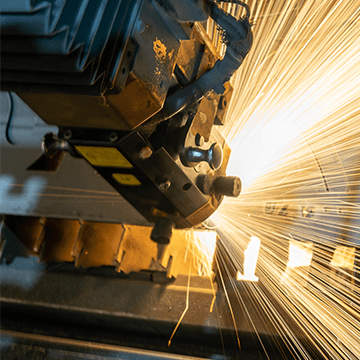- Solutions
- Products
- Community
- Resources
- Company
Create incredible candidate experiences that communicate your brand, mission, and values with recruitment marketing solutions.
Learn moreCommunicate effectively and efficiently with the candidates that can drive your business forward.
Learn moreSelect the right candidates to drive your business forward and simplify how you build winning, diverse teams.
Learn moreHelp your best internal talent connect to better opportunities and see new potential across your entire organization.
Learn moreCommunicate collectively with large groups of candidates and effectively tackle surges in hiring capacity.
Learn moreAccess tools that help your team create a more inclusive culture and propel your DEI program forward.
Learn moreRebound and respond to the new normal of retail with hiring systems that are agile enough to help you forge ahead.
Learn moreAccelerate the hiring of key talent to deliver point of care and support services that meet and exceed your promise of patient satisfaction.
Learn moreAttract and engage candidates with technical competencies, accelerate hiring for much-needed skills, and advance expertise within your valued workforce.
Learn moreSimplify how you recruit finance, insurance, and banking candidates with a unified platform built to match top talent with hard-to-fill roles.
Learn moreYour business strategy depends on your people strategy. Keep both in lockstep with the iCIMS Talent Cloud.
Learn moreBuild an engaging, high-converting talent pipeline that moves your business forward.
Learn moreDeliver the innovation your talent team needs, along with the global scale and security you demand.
Learn moreDeliver tailored technology experiences that delight users and power your talent transformation with the iCIMS Talent Cloud.
Learn moreThe #1 ATS in market share, our cloud-based recruiting software is built for both commercial and large, global employers.
Learn more Talk to salesAttract the best talent for your business with powerful, on-brand career websites that excite candidates and drive engagement.
Learn more Talk to salesBuild talent pipelines, engage candidates with multi-channel marketing campaigns, and use machine learning to automatically surface the right talent for the job.
Learn more Talk to salesEmpower candidates with automated self-service, qualification screening, and interview scheduling through an AI-enabled digital assistant.
Learn more Talk to salesSimplify employee onboarding with automated processes that maximize engagement and accelerate productivity.
Learn more Talk to salesCompliment your sourcing and engagement efforts with award-winning lead scoring and advanced campaign personalization.
Learn more Talk to salesImprove employee experience, retention, and reduce internal talent mobility friction with the iCIMS Opportunity Marketplace.
Learn more Talk to salesVerify skills with game-changing levels of automation and simplicity to improve the quality of hire at scale.
Learn more Talk to salesModernize, streamline, and accelerate your communication with candidates and employees.
Learn more Talk to salesTransform the talent experience by showcasing your authentic employer brand through employee-generated video testimonials.
Learn more Talk to salesGet robust analytics that help you make sense of your data and illuminate your talent pool.
Learn moreSimplify recruiting, dynamically engage talent, and reduce hiring bias with job matching and recruiting chatbot technology.
Learn more Talk to salesGet exclusive intel on industry and market trends along with expert one-on-one advice.
Learn more Talk to salesThe #1 ATS in market share, our cloud-based recruiting software is built for both commercial and large, global employers.
Learn more Talk to salesAttract the best talent for your business with powerful, on-brand career websites that excite candidates and drive engagement.
Learn more Talk to salesBuild talent pipelines, engage candidates with multi-channel marketing campaigns, and use machine learning to automatically surface the right talent for the job.
Learn more Talk to salesEmpower candidates with automated self-service, qualification screening, and interview scheduling through an AI-enabled digital assistant.
Learn more Talk to salesSimplify employee onboarding with automated processes that maximize engagement and accelerate productivity.
Learn more Talk to salesCompliment your sourcing and engagement efforts with award-winning lead scoring and advanced campaign personalization.
Learn more Talk to salesImprove employee experience, retention, and reduce internal talent mobility friction with the iCIMS Opportunity Marketplace.
Learn more Talk to salesVerify skills with game-changing levels of automation and simplicity to improve the quality of hire at scale.
Learn more Talk to salesModernize, streamline, and accelerate your communication with candidates and employees.
Learn more Talk to salesTransform the talent experience by showcasing your authentic employer brand through employee-generated video testimonials.
Learn more Talk to salesGet robust analytics that help you make sense of your data and illuminate your talent pool.
Learn moreSimplify recruiting, dynamically engage talent, and reduce hiring bias with job matching and recruiting chatbot technology.
Learn more Talk to salesGet exclusive intel on industry and market trends along with expert one-on-one advice.
Learn more Talk to salesHow a beloved restaurant hires 40,000+ annually with a great candidate experience.
Learn moreThousands strong, our global community of talent professionals includes creatives, innovators, visionaries, and experts.
Learn moreTogether we’re creating the world’s largest ecosystem of integrated recruiting technologies.
Learn moreExplore our network of more than 300 certified, trusted third-party service and advisory partners.
Learn moreUncover unique market insights, explore best practices and gain access to talent experts across out library of content.
Get resourcesExpert guidance about recruitment solutions, changes in the industry, and the future of talent.
Learn moreStay up to date with the latest terminology and verbiage in the HR software ecosystem.
Learn moreEmployers everywhere improve hiring efficiently and save money using iCIMS. Estimate the potential business value you can achieve.
Learn moreDive into the Class of 2023 Report highlighting this cohort’s expectations and where employers are willing — and able — to meet them.
Watch nowPartner with iCIMS to build the right strategies, processes, and experience to build a winning workforce.
Learn moreExpert guidance about recruitment solutions, changes in the industry, and the future of talent.
Learn moreThe iCIMS Talent Cloud delivers a secure, agile, and compliant platform designed to empower talent teams, job seekers, and partners with advanced data protection and privacy.
Learn moreView press releases, media coverage, and the latest hiring data. See what analysts are saying about iCIMS.
Learn moreiCIMS is the Talent Cloud company that empowers organizations to attract, engage, hire, and advance the talent that builds a winning workforce.
Learn moreGet to know the award-winning leadership team shaping the future of the recruiting software industry.
Learn moreWe believe the future of work isn't something that "happens" to you. It's something you create. We actively create the future of work with our customers every day.
Learn moreiCIMS is committed to being a responsible and ethical corporate citizen, which is why Environmental, Social and Governance (ESG) initiatives are strategic imperatives.
Learn moreStreamline your tech stack and take advantage of a better user experience and stronger data governance with ADP and the iCIMS Talent Cloud.
Learn moreThe combined power of iCIMS and Infor helps organizations strategically align their business and talent objectives.
Learn moreOur award-winning partnership with Microsoft is grounded in a shared desire to transform the workplace and the hiring team experience.
Learn moreOur partnership with Ultimate Kronos Group (UKG) supports the entire talent lifecycle by bringing frictionless recruiting solutions to UKG Pro Onboarding.
Learn moreLet’s get in touch. Reach out to learn more about iCIMS products and services.
Learn more

From jobs and taxes to healthcare and immigration, President Donald Trump owes his presidency to a broad collection of emotionally charged economic and social issues that galvanized his supporters as much as his detractors.
Among Trump’s many campaign promises, he pledged to revive the eroding U.S. manufacturing industry, which once served as the backbone of a now-shrinking middle class by providing stable blue-collar jobs that paid well and required little education.
After years of automated technology replacing workers and the outsourcing of jobs spurred by globalization, the manufacturing industry’s share of nonfarm payrolls plunged by half during the last quarter-century, from 16 percent in 1990 to 8 percent in 2016, according to the Bureau of Labor Statistics.
Regardless of whether Trump reverses the momentum, the manufacturing industry must solve a much greater problem, as it already faces a major talent shortage due to a widening skills gap. The industry will create 3.5 million jobs through 2025, but 2 million of them will go unfilled, according to Deloitte and The Manufacturing Institute.
Given the constant gloomy rhetoric, the manufacturing industry’s lack of workers for too many jobs seems surprising. However, as technology’s influence grows, the industry needs higher-skilled workers with advanced, technical education. Meanwhile, manufacturers will transition away from the low-skilled production occupations of the past, which will decline by 3.1 percent through 2024, according to the Bureau of Labor Statistics.
Unlike the far-more-challenging task of bringing back jobs by reversing economic trends, the manufacturing industry possesses far greater control over regaining job seekers’ interest. Ironically, the industry can use technology – the very disruptive entity responsible for so much change – to save itself. Armed with the right talent acquisition software, manufacturers can reach and attract the job seekers that they so desperately need.
The manufacturing industry makes goods, but now it needs to focus on remaking its image. Today, the industry conjures up images of abandoned factories with rusted walls and shattered windows, which evoke thoughts of a sector with glory days well behind it. Meanwhile, its constant place in the political spotlight arguably does more harm than good, as talks about reviving it – no matter how necessary or well-intentioned they may be — serve as a reminder of its fading economic footprints. If manufacturers hope to lure job seekers, then they need to change that perception, which they can do by touting the changing composition of their workforce.
Long associated with factory workers, the manufacturing industry’s hiring of such production jobs accounted for less than a quarter of its total hires in 2016, while 40 percent fell into the “other” category, including computer and math-related fields at nearly 10 percent, according to iCIMS. With hopes of catching the attention of today’s more-educated job seekers, the industry must publicize the growing breadth of its career offerings in such areas. For starters, it should consider investing in appropriately branded careers sites, where jobs seekers will almost certainly look, as 78 percent of them consider the professionalism, look, and feel of a company’s career portal as a moderately to highly important factor in deciding whether to apply for a job, according to iCIMS. Using the iCIMS Talent Acquisition Software Suite, manufacturers can highlight those modern positions and configure their careers sites as they see fit.
Though smaller than before, the manufacturing industry remains one of the strongest-performing industries, as it still contributes 12 percent of total GDP, according to the Bureau of Economic Analysis. With the nation’s economic wellbeing at stake, the industry should feel some pressure to preserve that percentage, which makes the challenge of overcoming the talent shortage all the more daunting. However, nobody says that its talent acquisition professionals should solve the problem alone.
Just as any other industry can do, the manufacturing industry can turn its current employees into an army of recruiters through an employee referral program. By leaning on employees for help, the industry will diversify its sourcing streams while making better hiring decisions, as nearly 45 percent of employers cite employee referrals as their best hires, according to iCIMS. With the iCIMS Talent Acquisition Software Suite, it will acquire the technology that allows for the implementation of employee referral programs, including automated job posting to employees’ social media profiles and referral source reporting.
From careers sites to job boards, the manufacturing industry should advertise its job openings wherever possible. However, the industry may get the best chance to position itself in front of the young job seekers that it needs the most through social media, as 43 percent of users between the ages of 19 and 29 use social networks to search for or research jobs, according to The Pew Research Center. Knowing that, it should focus at the very least on developing a presence on the Big 3, or Facebook, LinkedIn, and Twitter. Through the iCIMS Talent Acquisition Software Suite, manufacturers can use set-it-and-forget-it job publishing on their social networks and let job seekers apply through their social media profiles, among other capabilities.
and receive free tips on how to attract, engage, hire, & advance the best talent.




